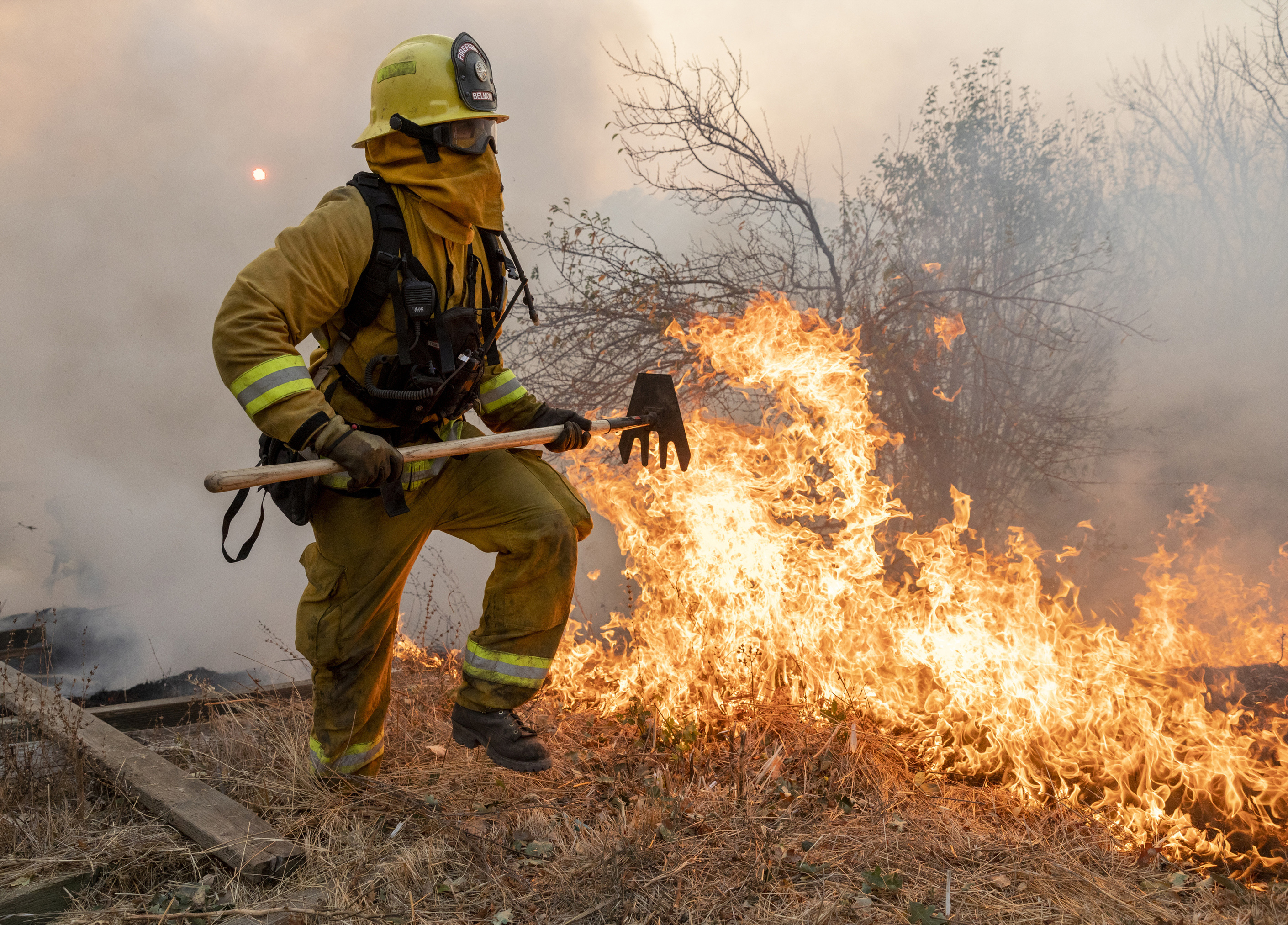Blackouts Are Making It Harder to Measure the ‘Toxic Stew’ in the Air From California’s Wildfires

Credit to Author: Alex Lubben| Date: Wed, 30 Oct 2019 21:10:05 +0000
Want the best of VICE News straight to your inbox? Sign up here.
California’s wildfires have blanketed major cities in the state with an orange haze, but rolling blackouts imposed by PG&E have made it harder for local health officials to track the level of pollution being released into the air.
Six of the state’s EPA-approved air quality monitors in Northern California were offline Tuesday due to the power company’s blackouts, the federal agency confirmed to VICE News.
The monitoring stations are part of a network of over 100 stations maintained by state and local agencies. They keep tabs on the amount of ozone and particulate pollution in the air that’s small enough for people to inhale and suffer respiratory and cardiovascular damage. Local officials use the data to figure out how much of a health risk the smoke poses so they can let people know if they should stay indoors, wear masks, or even evacuate.
“It complicates issues, certainly,” Kristine Roselius, a spokesperson for the Bay Area Air Quality Management District, told VICE News about the blackouts. “This data is basically what we use to make decisions on whether to call health alerts.”
In spite of the outages, health officials told VICE News they’re still confident they can get adequate data from the remaining operational stations as well as temporary ones deployed as a standard precaution.
On Tuesday, an air quality warning from the Bay Area Air Quality Management District remained in effect in San Francisco, where smoke from smaller wildfires caused residents to don masks this week. The agency also put out a Spare the Air alert, asking people to avoid driving to mitigate air pollution.
“We obviously would much rather have access to the high-quality quantitative information. And there's always the logistical issues — like having to run out and put in emergency monitoring,” said Steve Randall, an air monitoring manager with the Bay Area Air Quality Management District. “But in terms of the actual response to the fire, to make a health alert, that [not having power] hasn't really impacted our information.”
The Kincade Fire, a 76,000-acre blaze in wine country, has destroyed 120 structures, and firefighters have only contained about 15% of the flames. One station in the fire zone near Windsor, California, showed an air-quality index reading of 159, which indicated that the air was unhealthy to breathe.
Less than 15 miles south in Sebastopol, in an area in Sonoma County under a mandatory evacuation order because of the fire, another station was offline, the EPA confirmed to VICE News.
Stations also lost power in Forest Knolls, San Rafael, and Bethel Island Tuesday due to PG&E’s blackouts.
The California Air Resources Board deployed five additional temporary monitoring stations, closer to the Kincade Fire, to get better data. But two of those were offline because of the PG&E blackouts Tuesday as well, the California Air Resources Board told VICE News.
“PG&E will continue to communicate updates to state, county, and local officials and tribal leaders, as well as customers and the media through multiple channels throughout the event,” a company spokesperson told VICE News.
Assessing the risks associated with air pollution can be difficult, regardless. If the wildfires burn through structures that contain additional toxins, those would be released into the air as well. And the air quality monitors don’t even measure that.
“Wildfires do burn through forests, but they can also burn through homes and cars and buildings and structures that are filled with consumer products and toxic chemicals,” said Will Barrett, the clean air advocacy director for the American Lung Association in California. “They do create a toxic stew out there that can affect people’s health.”
PG&E, California’s largest utility, imposed its third round of blackouts in a month Tuesday to prevent the company’s equipment from sparking wildfires in the state, and the outages will affect an estimated 2 million people. Still, PG&E believes it may be responsible for as many as three wildfires, including Kincade.
The struggle to power air-quality monitors during fires likely won’t go away anytime soon. After the first round of blackouts in California this fire season, PG&E said upgrading its infrastructure to a point where the company won’t need to cut power again to mitigate the risk of sparking wildfires would take 10 years, according to the Wall Street Journal.
In the meantime, there’s no easy solution for how best to operate air-quality monitoring stations in a blackout. Backup generators produce their own emissions, which can skew the monitors’ readings, according to Randall. And installing enough solar panels to power them would take up a lot of space.
“The discussions are ongoing, and we've got a lot of ideas,” he said. “But we don't have the path forward on that one yet.”
Cover image: A firefighter from San Matteo helps fight the Kincade Fire in Sonoma County, Calif., on Sunday, Oct. 27, 2019. (AP Photo/Ethan Swope)
This article originally appeared on VICE US.